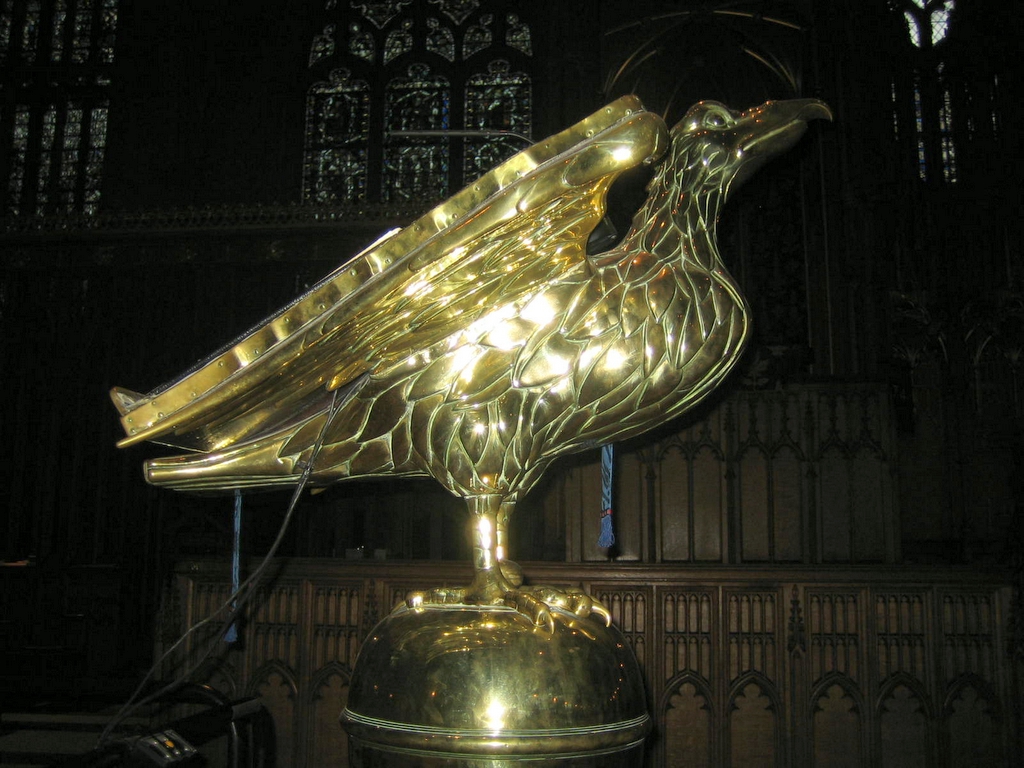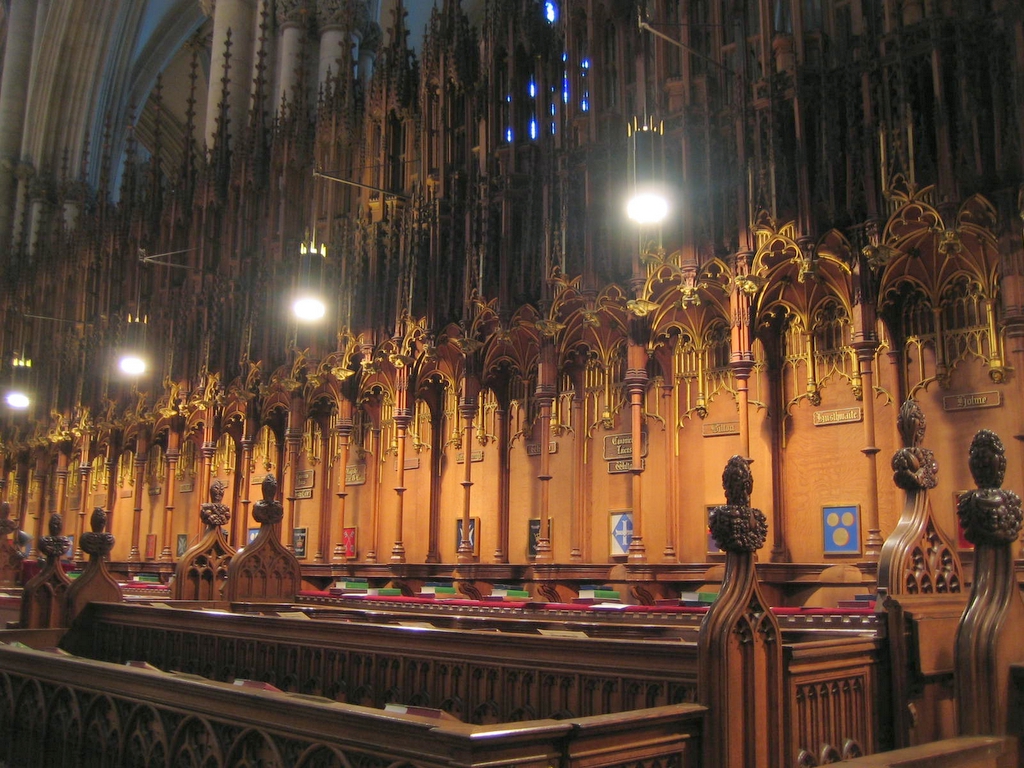|
|
York Minster -- The Quire |
|
|
York Minster -- The Quire |
The Choir (Quire) is generally the inner sanctum of the great cathedrals. It's where the bishop literally sits in his cathedra (his throne) and where the canons who assist him sit in their choir stalls. (Of course, York had its magnificent chapter house for its canons). Typically the choir would be set off from the plebian nave by a screen as the nave could be used for all sorts of riff-raff activities such as markets. (York's nave was unusable for many years after a fire burned the roof down). Hence the choir is often a highly decorated church-within-a-church, and York is no exception.
Here's a shot of the choir looking East toward the magnificent Great East Window behind the beautifully carved east screen.

Looking west, one sees the grand organ and the elaborately carved pulpit.
Here's a better shot of the 1832 great organ, restored in the early 1990s after the 1984 fire. After its latest reincarnation, it has over 5000 pipes.

Here's a detail from the lectern:

Unfortunately the east choir screen obstructs the interior view of the Great East window, made between 1405 and 1408 by the leading artisan of his day, John Thornton, and funded by the bishop of nearby Durham, itself the site of a great cathedral. (The exterior of this window was under repair while we were there; the last interior cleaning took ten years. It may be a while before we see all of this window again).

As in most medieval choirs, the sides are filled with the stalls for the canons. These elaborately carved stalls contain the crests of their prebends. A prebendal estate provided income to support the canon in his religious duties. All this funding came to an end in 1547 when Henry VIII dissolved the collegial churches, but the prebend titles stayed to honor senior priests, somewhat like the monsignor title used in the Catholic church. Supposedly the crests were first placed here to protect the wood from the hair grease of the canons.

All of this ornate woodwork was replaced in the 1830s after a religious fanatic, Jonathan Martin, set a fire that gutted the choir and its roof and nearly destroyed the Great East Window. Fortunately recent detailed drawings were available to assist in the recreation.